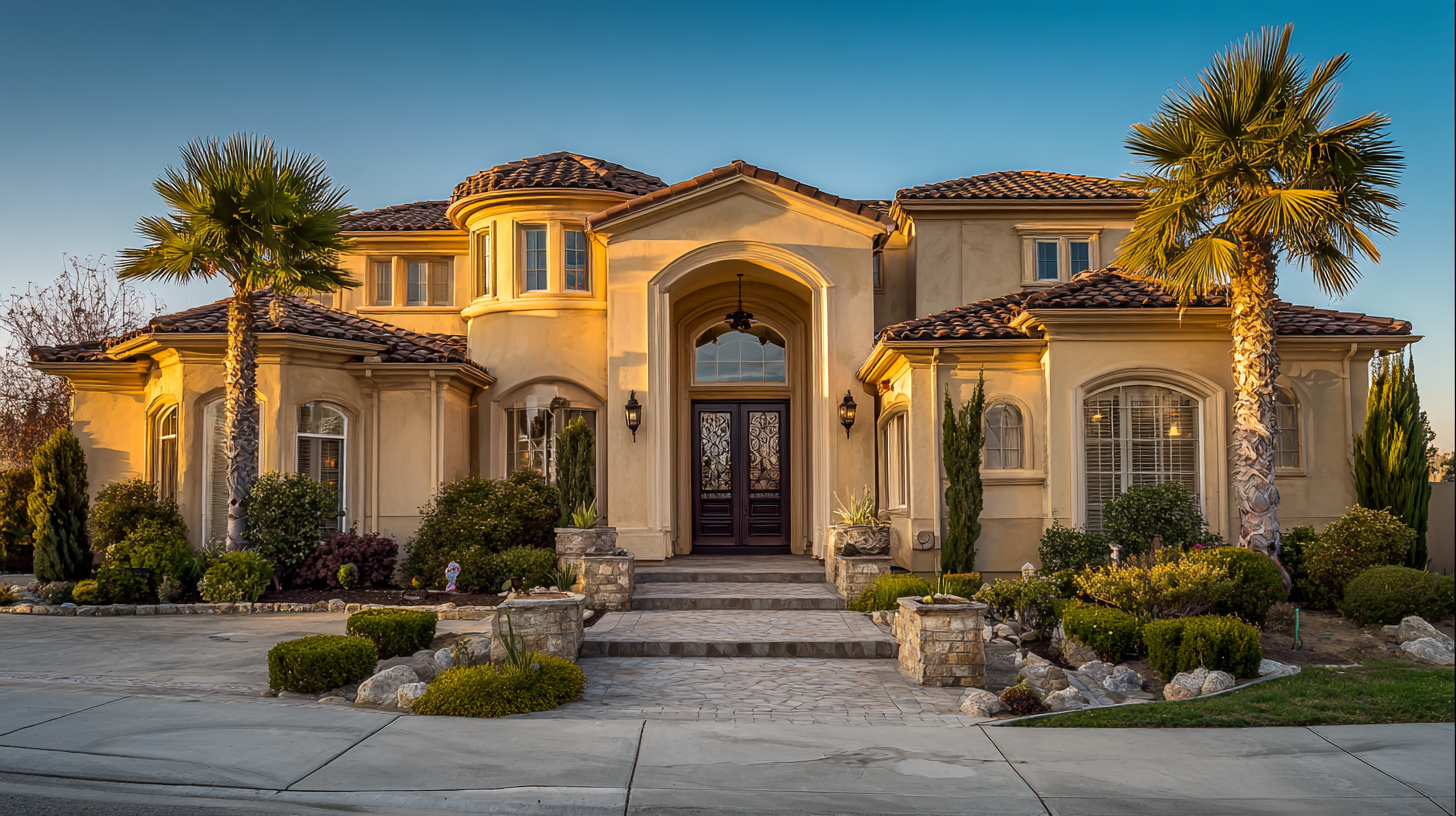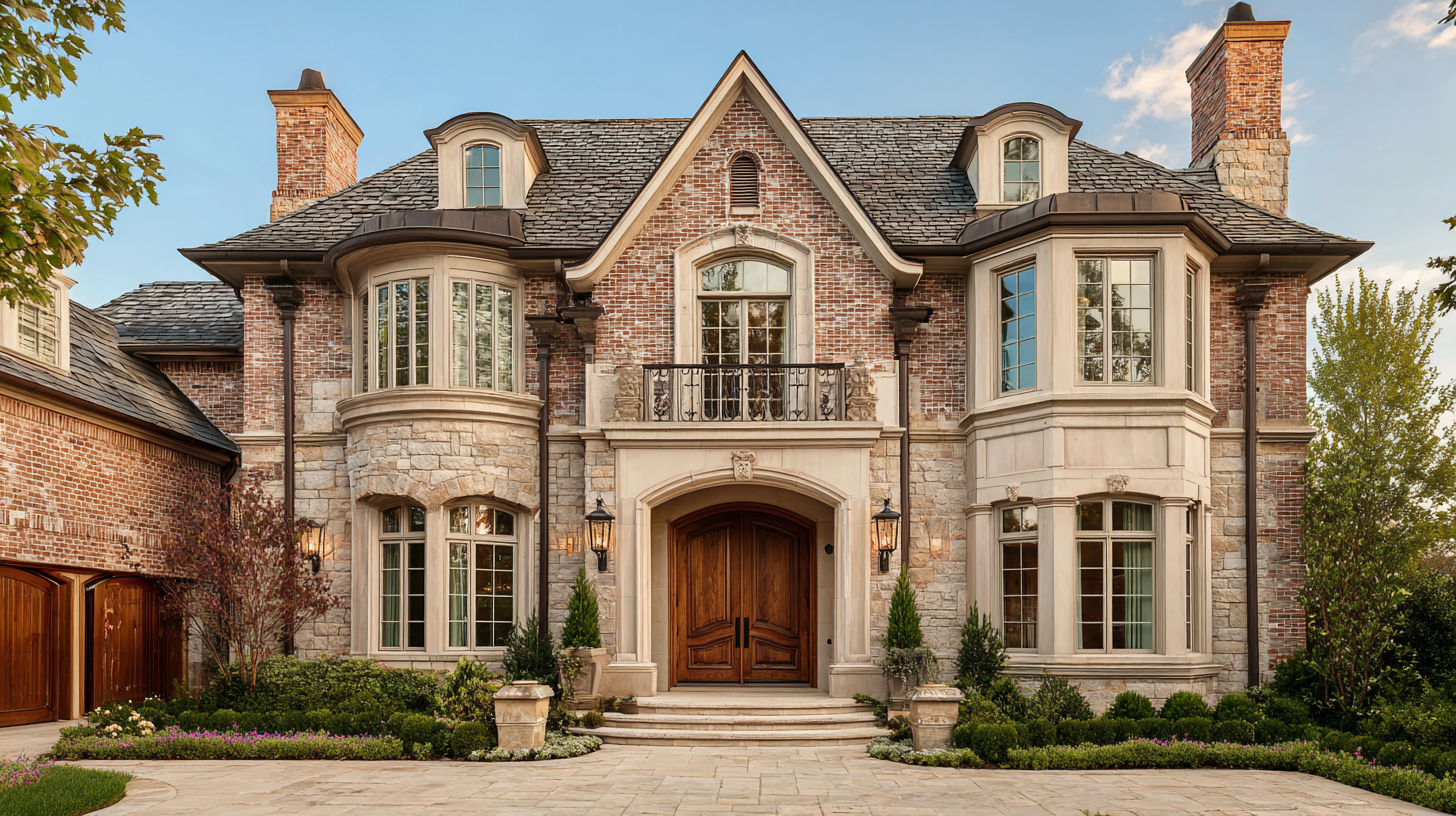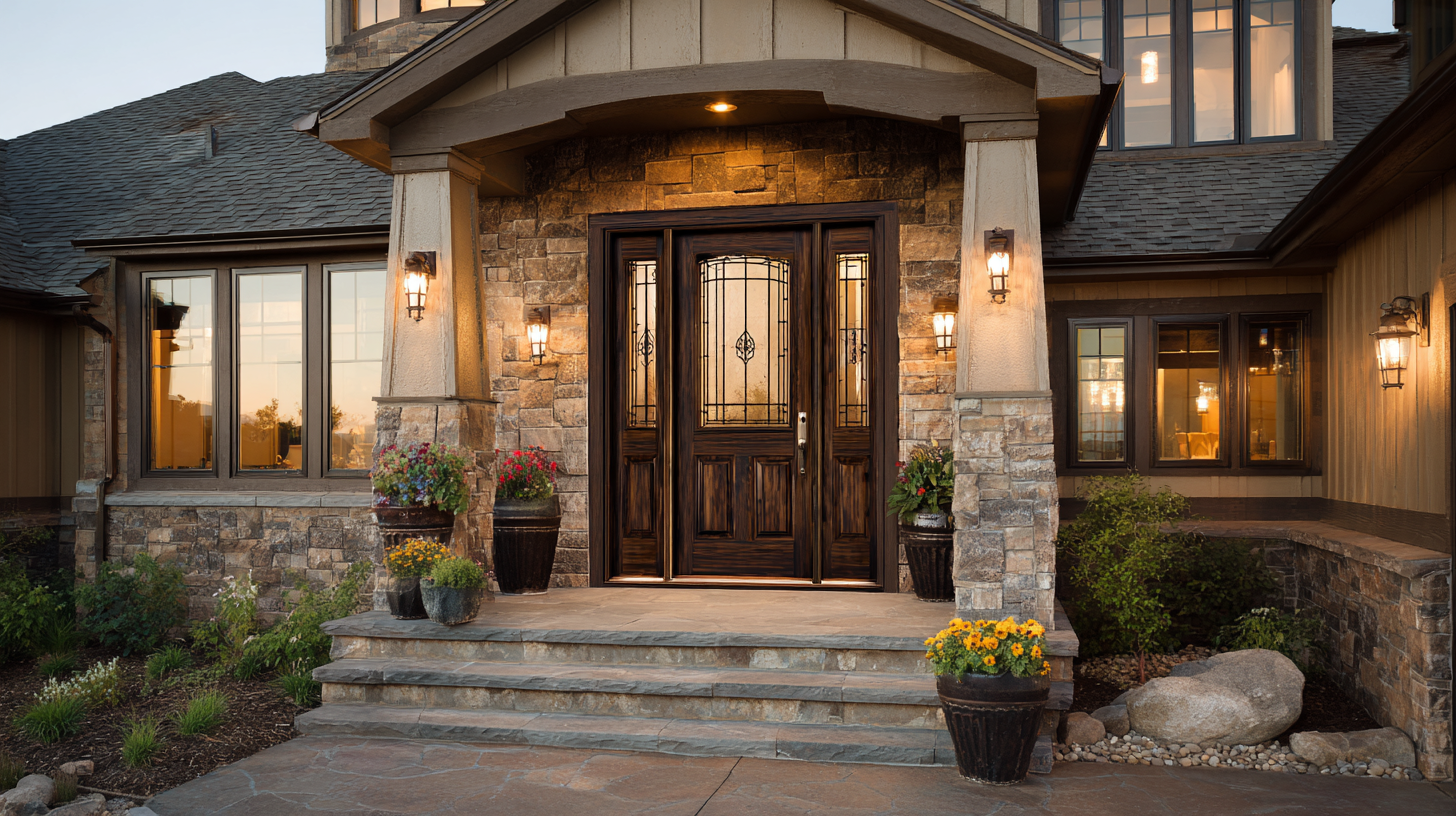Choosing the right Front Entry Doors for your home is more than just an aesthetic decision; it significantly impacts energy efficiency, security, and overall property value. According to the National Association of Realtors, the return on investment for upgrading your entry door can exceed 75%, making it one of the smartest home improvement choices. Moreover, a recent report by the U.S. Department of Energy shows that replacing older, less efficient doors can reduce energy costs by up to 10-15%. With various styles, materials, and security features available, selecting the ideal door can seem overwhelming. This ultimate guide will provide you with 7 key reasons to consider when choosing your Front Entry Doors, ensuring that you make an informed decision that enhances your home’s curb appeal and longevity.

When selecting front entry doors, it's crucial to avoid common design flaws that could compromise both aesthetics and functionality. One of the most prevalent mistakes is choosing a door that doesn't align with the overall architecture of your home. A mismatched style can create an uninviting entrance, so ensure your door complements the design elements of your house to enhance curb appeal.
Another key consideration is the door's material and insulation properties. Picking a door that lacks proper insulation can lead to energy inefficiency, resulting in higher utility bills. Opt for materials like fiberglass or solid wood which provide durability and better thermal performance.
Lastly, consider the scale of the door in relation to your entryway. An oversized door on a small entry can overwhelm the space, while a door that is too small can appear insignificant. Aim for a door that maintains proportionality, ensuring it functions well while also making a stylish statement.
| Feature | Description | Common Flaws to Avoid |
|---|---|---|
| Material | Wood, fiberglass, steel, or composite | Choosing a material unsuitable for climate conditions |
| Style | Traditional, modern, craftsman, etc. | Incompatibility with home architecture |
| Security Features | Locks, impact-resistant materials, and installation | Neglecting secure locking systems |
| Energy Efficiency | Insulated doors and weather stripping | Skipping energy-efficient options |
| Size and Fit | Standard and custom sizes available | Selecting the wrong size for your opening |
| Finish and Color | Variety of stains, paints, and finishes | Choosing colors that clash with home exterior |
| Installation | DIY vs. professional installation | Poor installation leading to gaps and inefficiency |
 Choosing the right material for your front entry door is pivotal not only for aesthetic appeal but also for its durability and weather resistance. According to a report by the American Architectural Manufacturers Association (AAMA), fiberglass doors are becoming increasingly popular due to their superior insulating properties and resistance to warping. In fact, fiberglass doors can last up to 25 years with minimal maintenance, outperforming traditional wood doors, which often require regular refinishing and can absorb moisture, leading to deterioration.
Choosing the right material for your front entry door is pivotal not only for aesthetic appeal but also for its durability and weather resistance. According to a report by the American Architectural Manufacturers Association (AAMA), fiberglass doors are becoming increasingly popular due to their superior insulating properties and resistance to warping. In fact, fiberglass doors can last up to 25 years with minimal maintenance, outperforming traditional wood doors, which often require regular refinishing and can absorb moisture, leading to deterioration.
When assessing weather resistance, steel doors also present a compelling option. The National Association of Home Builders (NAHB) highlights that steel doors typically have a galvanized coating that protects them from rust, making them ideal for areas with high humidity or coastal climates where salt exposure is a concern. Furthermore, research indicates that well-insulated steel doors can provide energy savings of 10-15% over standard models, making them a practical choice for homeowners looking to enhance energy efficiency while ensuring their door withstands harsh weather conditions.
When it comes to selecting front entry doors for your home, security should be at the forefront of your decision-making process. An entry door is the first line of defense against intruders, and incorporating robust safety features is crucial. Look for doors made from solid materials such as fiberglass or steel, as they tend to resist forced entry better than hollow-core options. Additionally, ensure that the door has a multi-point locking system, which secures the door at multiple points, making it much harder to breach.
Moreover, you should also consider the door’s frame and hardware. A sturdy frame made of reinforced materials can significantly enhance your door's security. High-quality deadbolts and smart locks add an extra layer of protection, allowing you to monitor access to your home. Don't overlook the importance of security features such as impact-resistant glass and door viewers, which can provide peace of mind while also enhancing your home's safety. By prioritizing these elements, you can choose an entry door that not only complements your home’s aesthetic but also fortifies its security.
When selecting front entry doors, homeowners often overlook the significant role insulation plays in their overall energy efficiency and comfort. According to the U.S. Department of Energy, poorly insulated doors can lead to an average energy loss of 10% to 15%, which can dramatically impact heating and cooling costs. For instance, homes with insulated entry doors can save between $100 to $500 annually on energy bills, depending on local climate conditions.
Furthermore, the type of material used in a front door significantly influences its insulation properties. Fiberglass doors, for example, are known for their excellent thermal performance, often featuring polyurethane foam cores that provide superior insulation compared to traditional wooden or metal doors. The National Association of Realtors reports that upgrading to a high-quality insulated entry door can yield an impressive return on investment, with homeowners recovering approximately 75% of the cost in increased home value. Therefore, choosing the right front entry door isn't just about aesthetics; it’s a smart investment towards a more energy-efficient and comfortable living environment.
When it comes to front entry doors, choosing a design that complements your home’s style is crucial to achieving an aesthetic that feels cohesive and inviting. One common mistake homeowners make is mismatching their door with the overall exterior. Design experts suggest that a well-chosen door color can enhance curb appeal significantly. For instance, deep navy, classic black, and rich reds or greens are often recommended as timeless choices that convey sophistication and provide a striking visual contrast against neutral or warm-toned homes.
When selecting a door color, consider the harmony it creates with your home’s architecture. It's worth noting that many decorators advocate for coloring the door to match the home’s walls, particularly in smaller spaces. This technique creates a seamless transition that can enhance the sense of space, making your entrance appear larger and more refined. However, homeowners should also be wary of making bold color choices that clash with existing elements; aim for a color palette that feels both distinctive and complementary.
Tips:
- Explore color swatches in natural light to see how they interact with your home’s materials and landscape.
- Consider using a mix of materials and trims to add depth; for example, combining wood elements with painted finishes can create visual interest without overwhelming the façade.
- Don’t shy away from experimenting, but ensure that your choices align with the overall theme of your home to avoid common pitfalls.

Call us at (516) 858-2492
for a free estimate or simply click the button below: